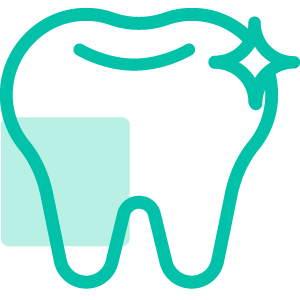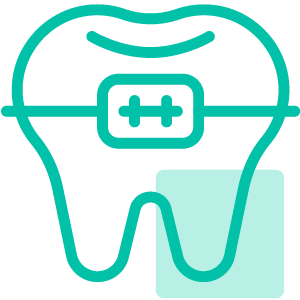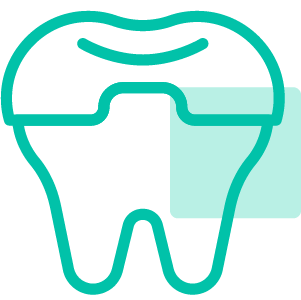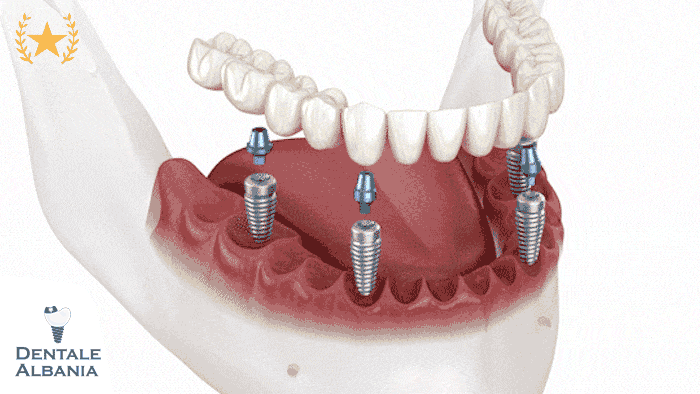What Is Dental Prosthodontics and How Does It Work?

Dental prosthodontics is a specialized field within dentistry focused on restoring or replacing missing, damaged, or defective teeth and tissues using artificial materials. It’s more than just aesthetics — it’s about functional rehabilitation, oral health, and long-term comfort.
- Definition and Scope: Prosthodontics, derived from the Greek “prostho” (meaning replacement) and “dontics” (meaning teeth), refers to the discipline of creating dental prostheses. It includes the diagnosis, treatment planning, rehabilitation, and maintenance of oral function using biocompatible substitutes.
- Recognized Specialty: It is officially recognized by the American Dental Association (ADA) and dental governing bodies in the UK, Europe, and Australia as one of the core dental specialties.
- Applications: Prosthodontics covers a wide range of treatments including dentures, crowns, bridges, inlays/onlays, veneers, and implants. It also extends to more complex treatments like full-mouth rehabilitation and care for patients recovering from cancer or trauma.
- Cosmetic and Functional: Unlike purely cosmetic dentistry, prosthodontics bridges the gap between appearance and function. The goal is to restore natural-looking teeth while maintaining optimal chewing function, speech, and jaw alignment.
- Multidisciplinary Approach: Prosthodontists often work closely with oral surgeons, periodontists, orthodontists, and even oncologists in complex cases.
What Does Prosthodontics Mean in Dentistry?
- It involves restoring oral health in patients with missing or severely damaged teeth.
- Prosthodontists use advanced dental materials to recreate the form and function of teeth and soft tissue.
- The field goes beyond just placing crowns or dentures — it includes designing comprehensive rehabilitation plans that may involve implants or TMJ therapy.
What Is the Goal of Prosthodontics?
- Restore Function: Enable patients to eat, speak, and chew normally.
- Enhance Aesthetics: Improve smile appearance using lifelike dental prostheses.
- Support Oral Health: Prevent shifting of teeth, bone loss, and further deterioration.
- Relieve Pain: Address issues like TMJ dysfunction and bite misalignment.
- Promote Longevity: Deliver solutions designed to last long-term with proper care.
What Is a Prosthodontist and How Are They Different from Other Dentists?

When it comes to restoring damaged or missing teeth, a prosthodontist is the go-to expert. But how exactly do they differ from general dentists or other dental specialists?
- Specialized Training: After completing dental school, prosthodontists undergo an additional three years of full-time advanced training in an ADA- or GDC-accredited residency program. This extensive education focuses specifically on the art and science of prosthetic restoration and rehabilitation.
- Advanced Skill Set: Prosthodontists are equipped to treat complex cases involving multiple missing teeth, worn-down dentition, oral cancer recovery, or facial deformities. Their skills extend beyond what general dentists are typically trained for.
- Treatment Planning Experts: They are often the central coordinators in multidisciplinary dental care, collaborating with surgeons, periodontists, and orthodontists to develop comprehensive and long-term treatment strategies for patients.
What Is the Difference Between a Prosthodontist and a Dentist?
- General dentists perform a wide range of procedures, including cleanings, fillings, and simple crowns.
- Prosthodontists focus exclusively on complex restorations, full-mouth reconstructions, and advanced prosthetics.
- Dentists may refer challenging cases to prosthodontists for their expertise in crafting highly precise, aesthetic, and functional restorations.
What Is the Difference Between a Prosthodontist and a Dental Technician?
- A prosthodontist diagnoses and treats patients, while a dental technician manufactures the prosthetic devices (like dentures or crowns) based on instructions from the dentist or prosthodontist.
- Dental technicians work behind the scenes in dental labs; prosthodontists interact directly with patients to plan and deliver care.
What Is the Difference Between a Prosthodontist and a Maxillofacial Prosthodontist?
- A maxillofacial prosthodontist is a subspecialist who treats patients with major facial and jaw defects due to trauma, cancer, or birth defects.
- These professionals undergo an additional one-year fellowship after their prosthodontic training and may work closely with surgeons and hospitals.
- They create facial prosthetics, such as artificial eyes, ears, or jaw structures, in addition to oral restorations.
When Should You See a Prosthodontist?
Wondering if a prosthodontist is the right dental specialist for your needs? While your general dentist can handle routine care, certain conditions require a higher level of expertise — and that’s where prosthodontists come in.
- Complex Tooth Loss: If you have multiple missing teeth or need a full-mouth reconstruction, a prosthodontist can design a cohesive, long-lasting treatment plan involving implants, bridges, or dentures.
- Severely Damaged Teeth: Cases of extreme tooth wear, cracks, or fractures may need custom restorations like crowns or veneers crafted by a specialist.
- TMJ Disorders and Bite Issues: Pain or clicking in your jaw, frequent headaches, or problems with chewing might be related to occlusion issues — something prosthodontists are highly trained to evaluate and treat.
- Dental Trauma or Congenital Conditions: Patients who have experienced facial injuries or were born with oral defects (like cleft palate or missing teeth) benefit from the interdisciplinary care that prosthodontists offer.
- Failed Dental Work: If previous restorations (crowns, bridges, veneers) have failed or look unnatural, a prosthodontist can assess the situation and provide functional and aesthetic replacements.
Why Would You See a Prosthodontist?
- For expert evaluation of missing or severely worn teeth.
- To access high-level aesthetic treatments that restore your smile naturally.
- When your case is too complex for a general dentist to handle alone.
When to Refer to a Prosthodontist?
- General dentists often refer patients when treatment involves multiple teeth, implant-supported restorations, or multidisciplinary care.
- Referral may also be necessary when patients suffer from bite dysfunction, oral pain, or have high expectations for cosmetic outcomes.
What Are the Most Common Prosthodontic Treatments?
Prosthodontic treatments go beyond simple cosmetic enhancements — they restore both form and function to teeth, gums, and facial structures. Here’s a breakdown of the most common procedures offered by prosthodontists.
- Crowns: Also called “caps,” crowns are placed over damaged or decayed teeth to restore shape, strength, and appearance. They’re ideal for teeth that can’t be saved with fillings alone.
- Bridges: Used to replace one or more missing teeth, a bridge consists of artificial teeth anchored between two crowns. Bridges help restore a complete bite and prevent surrounding teeth from shifting.
- Dentures: Available as full or partial, dentures are removable prostheses designed to replace several or all missing teeth. They help restore chewing ability, facial volume, and confidence.
- Dental Implants: Small titanium or ceramic posts inserted into the jawbone to replace missing tooth roots. Once healed, they can support crowns, bridges, or dentures, offering the most stable and natural-feeling solution.
- Inlays and Onlays: These are partial restorations used when a tooth is too damaged for a filling but doesn’t require a full crown. They’re custom-made and bonded into the prepared cavity.
- Veneers: Thin ceramic shells that cover the front surface of teeth to correct shape, color, and minor misalignments. While cosmetic, veneers often require prosthodontic precision for long-lasting results.
Does a Prosthodontist Do Crowns?
- Yes — prosthodontists are crown specialists, especially when the case involves multiple restorations, worn-down teeth, or esthetic concerns.
- Crowns may be used on their own or as part of larger treatments like bridges or implant restorations.
Do Implants Fall Under Prosthodontics?
- Absolutely — prosthodontists are trained in implant-supported restorations.
- While oral surgeons may place the implant itself, prosthodontists design and attach the crown, bridge, or denture that goes on top, ensuring proper fit and function.
What Is the Difference Between Fixed and Removable Prosthodontics?
When it comes to prosthodontics, one of the key distinctions lies in whether the prosthesis is fixed (permanent) or removable. Understanding this difference can help you make informed decisions about which type of restoration best suits your needs.
What Is Fixed Prosthodontics?
- Definition: Fixed prosthodontics refers to dental prostheses that are permanently attached to the teeth or implants. These include crowns, bridges, and some implant-supported restorations.
- Advantages: Fixed restorations offer enhanced stability, improved comfort, and a natural appearance because they’re not removable by the patient.
- Common Treatments: Crowns, bridges, implant-supported crowns, and bridges.
- Ideal Candidates: Patients with healthy teeth or implants who want long-term solutions that won’t require daily removal or care.
What Is Removable Prosthodontics?
- Definition: Removable prosthodontics includes devices that can be taken out and put back in by the patient. This category includes full dentures, partial dentures, and some implant-supported overdentures.
- Advantages: These devices are often more affordable and versatile, and they may be a good option for patients who have multiple missing teeth or need a temporary solution.
- Common Treatments: Full dentures, partial dentures, and implant-retained dentures.
- Ideal Candidates: Patients with extensive tooth loss, financial limitations, or those in need of a temporary option before permanent restorations.
Which Option Is Right for You?
- Fixed Prosthodontics is best if you’re looking for a long-term, low-maintenance solution and have enough healthy teeth or bone structure to support it.
- Removable Prosthodontics may be the best option if you have extensive tooth loss, want an affordable option, or need a temporary solution while considering permanent treatments.
What Are the Different Types of Prostheses?

Prosthodontics offers a variety of solutions to restore function, comfort, and aesthetics for patients with missing or damaged teeth. These restorations are designed to mimic natural teeth as closely as possible while meeting the specific needs of the patient.
Crowns
- Definition: A crown is a cap that completely encases a tooth that is severely damaged or decayed. It’s typically made from ceramic, porcelain, or metal alloys.
- Purpose: Crowns restore strength, size, shape, and appearance to a damaged tooth, often following procedures like root canal therapy.
- When to Use: Crowns are ideal when a tooth is severely decayed, cracked, or weakened.
Bridges
- Definition: Bridges are used to replace one or more missing teeth by anchoring artificial teeth to adjacent healthy teeth or implants.
- Types: Traditional bridges are supported by natural teeth, while implant-supported bridges rely on dental implants for anchoring.
- When to Use: Bridges are ideal for replacing multiple missing teeth in a row when implants are not an option or when cost is a consideration.
Dentures
- Definition: Dentures are removable prosthetic devices designed to replace missing teeth. They come in two main types: full dentures (replacing all teeth) and partial dentures (replacing a few missing teeth).
- When to Use: Dentures are typically recommended for patients who have lost all or most of their teeth, or as a temporary solution while waiting for implants or other treatments.
Implants
- Definition: A dental implant is a titanium post that is surgically placed into the jawbone to act as a replacement for a missing tooth root. Once integrated, an artificial crown or bridge is attached.
- Benefits: Implants offer a permanent, natural-looking solution that helps preserve jawbone density and stability.
- When to Use: Implants are best for patients who are missing one or more teeth but have sufficient jawbone density for the implant to anchor.
Inlays and Onlays
- Definition: These are custom-made, partial restorations that fit into the tooth structure, often used for moderate tooth damage that’s too severe for fillings but not extensive enough for a full crown.
- Benefits: Inlays and onlays provide a more aesthetic and durable alternative to fillings for teeth with larger cavities.
- When to Use: Typically used for teeth that experience moderate wear or cavities but do not require full crowns.
Veneers
- Definition: Veneers are thin shells of porcelain or composite resin that cover the front surface of teeth to enhance their appearance.
- Purpose: Veneers are ideal for improving the aesthetic appearance of teeth that are discolored, chipped, or slightly misaligned.
- When to Use: Veneers are commonly used in cosmetic dentistry for front teeth to improve smiles.
What Is Maxillofacial Prosthodontics?
Maxillofacial prosthodontics is a highly specialized field within prosthodontics that focuses on restoring and replacing lost or damaged facial structures. This branch of prosthodontics is dedicated to treating patients who have congenital or acquired defects of the head, neck, and facial regions due to trauma, cancer, or birth conditions.
What Is Maxillofacial Prosthodontics?
- Definition: Maxillofacial prosthodontics involves the creation of prosthetic devices to replace missing facial structures such as the eyes, ears, nose, and parts of the jaw.
- Treatment Focus: This specialty not only addresses oral and dental issues but also the reconstruction of external facial features to improve appearance and restore function.
- Complex Cases: Prosthodontists specializing in this field work with patients who have undergone head and neck surgeries, including those who have lost facial features due to cancer, trauma, or congenital disorders.
Who Needs Maxillofacial Prosthodontics?
- Traumatic Injuries: Patients who have experienced accidents resulting in facial trauma, such as car accidents or sports injuries.
- Oral Cancer Patients: Those who have undergone surgery for oral cancers that involved removing parts of the face or mouth.
- Congenital Defects: Patients born with conditions like cleft palates, missing facial structures, or other birth defects.
- Reconstructive Surgery: Individuals in need of reconstruction following reconstructive surgery for head and neck issues.
Types of Prostheses in Maxillofacial Prosthodontics
- Facial Prosthetics: Prostheses such as artificial eyes, ears, noses, and jaws that are custom-made to fit the patient’s facial structure and restore their appearance.
- Intraoral Prostheses: Includes palatal obturators, which are used to close defects in the roof of the mouth caused by surgery or congenital conditions.
- Speech Prostheses: Devices that help patients regain the ability to speak properly after major surgery, such as speech aids for those who have undergone jaw or soft palate removal.
How Is Treatment Done in Maxillofacial Prosthodontics?
- Multidisciplinary Approach: Maxillofacial prosthodontics requires collaboration with oral surgeons, oncologists, and plastic surgeons to ensure comprehensive care.
- Customization: Each prosthesis is custom-made for the patient to ensure a natural appearance, fit, and comfort.
- Ongoing Care: Prostheses may require regular maintenance, adjustment, or replacement to ensure the patient’s comfort and functionality over time.
What Are the Risks and Benefits of Prosthodontics?
Like any dental treatment, prosthodontic procedures come with both risks and benefits. Understanding these will help you make an informed decision about whether a prosthodontic solution is right for you.
Benefits of Prosthodontics
- Restores Functionality: Prosthodontics help restore essential functions such as chewing, speaking, and swallowing, which can be impaired by missing or damaged teeth.
- Improves Aesthetics: Prosthetic treatments, such as crowns, veneers, and dentures, can significantly enhance the appearance of a person’s smile, boosting their confidence and overall facial aesthetics.
- Long-Lasting Solutions: Many prosthodontic treatments, such as dental implants and crowns, are designed to last for many years, providing durable and stable solutions for tooth loss.
- Prevents Further Damage: Prosthodontic restorations help protect remaining natural teeth from damage, decay, or misalignment caused by tooth loss or trauma.
- Pain Relief: For patients with TMJ disorders or significant tooth wear, prosthodontics can help relieve pain and discomfort, improving quality of life.
Risks of Prosthodontics
- Infection: As with any surgical procedure, prosthodontic treatments involving implants or extensive dental work may carry a small risk of infection at the site of treatment.
- Rejection or Complications with Implants: Dental implants may fail to integrate with the bone, leading to implant rejection or complications that require additional procedures.
- Discomfort During Healing: After treatments like dental implants or crown placements, some discomfort or swelling may occur, which typically resolves as the body heals.
- Expense: Prosthodontic treatments, especially procedures like dental implants or full-mouth restorations, can be costly, and not all treatments may be covered by insurance.
- Maintenance and Adjustments: Some prostheses may require regular adjustments or maintenance to ensure they remain functional and comfortable, such as tightening or replacing components in dentures or implants.
Are Prosthodontics Right for You?
- Evaluate Your Needs: If you have multiple missing teeth, significant tooth damage, or specific functional issues, prosthodontics might be an ideal solution to restore both appearance and function.
- Consider the Risks: While the risks are minimal for most patients, it’s important to discuss any health concerns with your prosthodontist, particularly if you have underlying conditions like diabetes or heart disease.
How Expensive Is It to See a Prosthodontist?

Prosthodontic treatments can vary significantly in cost depending on the complexity of the procedure, the type of treatment required, and the geographic location of the dental practice. Here’s a breakdown of potential costs involved in seeing a prosthodontist.
Factors Affecting the Cost of Prosthodontic Treatments
- Type of Procedure: The cost can vary greatly depending on the complexity of the procedure. Simple crowns or bridges may cost less, while full-mouth reconstructions or advanced implant procedures tend to be more expensive.
- Material Used: The materials used for crowns, bridges, dentures, or implants can also affect cost. Porcelain crowns or ceramic restorations tend to be more expensive than metal-based alternatives.
- Location of the Practice: Dental fees vary by location. Prosthodontists in urban areas or high-cost-of-living regions tend to charge more for their services.
- Number of Visits: Treatments like implants or full-mouth rehabilitation may require multiple appointments, leading to higher overall costs due to extended care.
- Insurance Coverage: Insurance may cover some prosthodontic treatments, but the level of coverage depends on your plan. Dental insurance typically covers basic procedures like fillings and crowns but may offer limited coverage for implants or cosmetic treatments.
Estimated Costs for Common Prosthodontic Treatments
- Dental Crowns: Typically range from $800 to $2,500 per tooth. The final cost depends on the material used, such as ceramic, porcelain, or gold.
- Bridges: Can cost between $1,500 to $5,000 depending on the number of missing teeth and materials used.
- Dentures: Full dentures may cost anywhere from $1,000 to $3,000 per set, while partial dentures are generally less expensive.
- Dental Implants: The cost of a dental implant can range from $1,500 to $6,000 for a single implant, including the post, abutment, and crown. Full implant-supported restorations or multiple implants can be significantly more expensive.
- Veneers: Porcelain veneers typically cost between $900 and $2,500 per tooth.
Can Insurance Cover Prosthodontic Treatments?
- Basic Procedures: Many insurance plans cover basic prosthodontic treatments like crowns and bridges, though coverage might be limited.
- Implants and Cosmetic Treatments: These are often not covered by insurance plans, though some dental insurance providers offer partial coverage for implants or may consider it a cosmetic procedure.
- Flexible Spending Accounts (FSAs): FSAs or Health Savings Accounts (HSAs) may allow patients to use pre-tax money for prosthodontic treatments.
How to Manage the Costs of Prosthodontics
- Financing Options: Many dental offices offer payment plans or financing options to make treatment more affordable. These plans allow patients to pay in installments over time.
- Get a Consultation: Before committing to treatment, consult with your prosthodontist about available financing options and whether any discounts may apply based on your specific case.
- Compare Prices: If cost is a concern, it’s worthwhile to get multiple consultations to compare pricing and find a solution that fits your budget.
Frequently Asked Questions About Dental Prosthodontics
What Does Prosthodontics Mean in Dentistry?
- Definition: Prosthodontics is a specialized branch of dentistry focused on the restoration and replacement of missing or damaged teeth and oral tissues. It involves the use of prostheses (such as crowns, bridges, dentures, and implants) to restore both function and aesthetics to the teeth and mouth.
- Main Focus: Prosthodontics addresses issues such as tooth loss, severe tooth damage, and oral trauma, ensuring that patients regain a full and functional smile.
Why Would You See a Prosthodontist?
- Severe Tooth Damage: If you have extensive tooth damage that cannot be treated with fillings, you may be referred to a prosthodontist for crowns or bridges.
- Missing Teeth: Prosthodontists are experts in restoring missing teeth through dentures, implants, and bridges.
- Complex Restorations: If your case involves a full-mouth reconstruction or multiple missing teeth, a prosthodontist has the specialized training to handle such complex restorations.
- Cosmetic Enhancements: Many patients see a prosthodontist for aesthetic treatments, such as veneers or crowns, to improve the appearance of their smile.
- Jaw and Bite Problems: If you have issues with jaw alignment (such as TMJ disorders), a prosthodontist can help with treatments to restore proper function and alleviate pain.
Oral Trauma or Cancer: Prosthodontists also specialize in reconstructive procedures following oral cancer treatments or trauma that results in the loss of facial structures or teeth.








